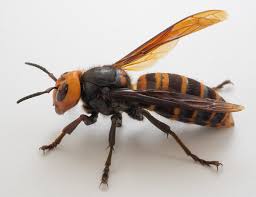The Threat of Asian Hornets Nest in the UK

Introduction
The Asian hornet (Vespa velutina) is an invasive species that has become a growing concern in the UK since its first sighting in 2016. Its impact on local ecosystems, particularly pollinators like bees, makes it a critical topic for environmentalists, farmers, and the general public. Understanding the threat posed by the Asian hornets nest is essential for effective management and prevention.
Current Situation
Recent reports indicate that Asian hornets have expanded their presence across several regions of the UK, including Wales and parts of England. The nests are typically found in trees, shrubs, and buildings, often reaching significant sizes—up to 1.5 meters in diameter. During late summer, these nests can contain several hundred to thousands of wasps, which poses a direct threat to honeybee populations as they hunt for food. Honeybees are critical for agricultural practices, contributing to the pollination of various crops.
Authorities, including the National Bee Unit, have been actively monitoring and tracking the nests to prevent further proliferation. In 2022, 25 active nests were reported in the UK, leading to increased efforts towards public awareness and reporting of sightings by local communities. The government has established a swift response team to deal with nests, deploying traps and removal teams to mitigate the impact on biodiversity.
Impact on Ecosystems
The invasion of Asian hornets can lead to significant ecological changes. Their predation on honeybees not only threatens honey production but also jeopardises the pollination process vital for various crops and wild plants. A balanced ecosystem relies on the interactions between species, and the decline of bee populations can have cascading effects on food production and wildlife.
Conclusions and Future Outlook
The threat of the Asian hornets nest cannot be underestimated, as the potential impacts on agriculture and biodiversity are substantial. Continuous monitoring and rapid response strategies remain crucial for managing their population. The public’s role in reporting sightings and raising awareness is equally important in combating the invasion. As climate change continues to alter habitats, the likelihood of similar invasive species threatening the UK’s ecosystems is also likely to increase, underscoring the need for proactive measures and strategies.
